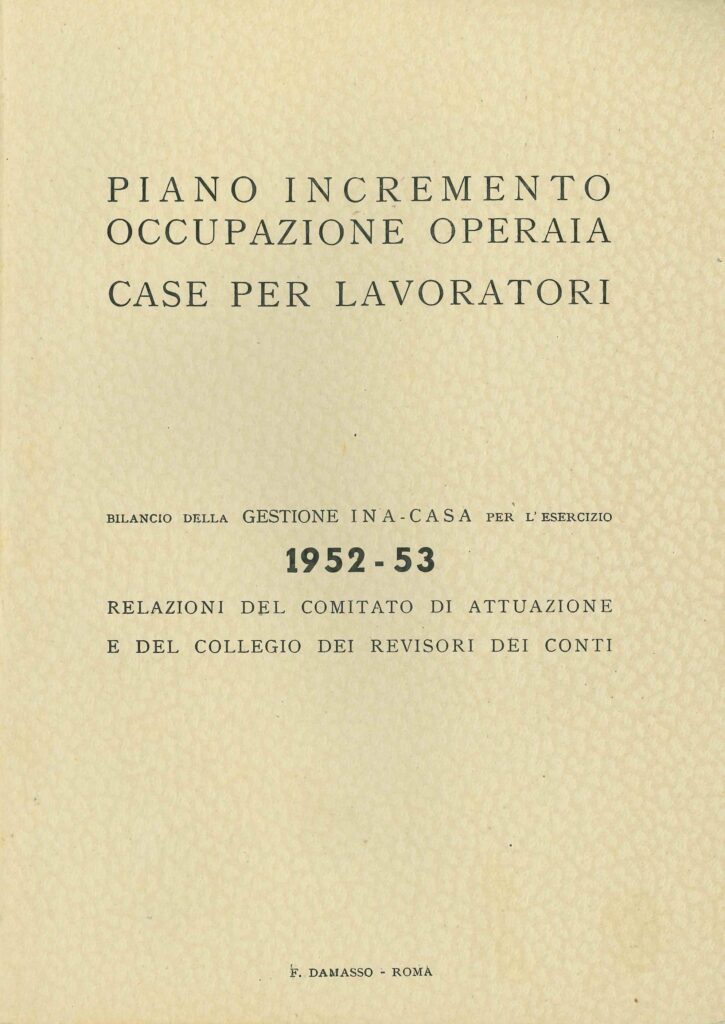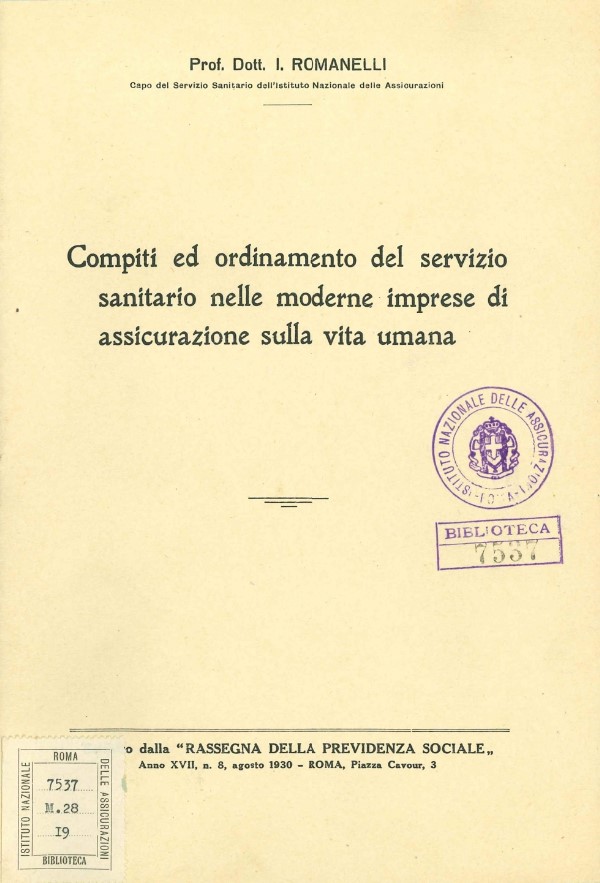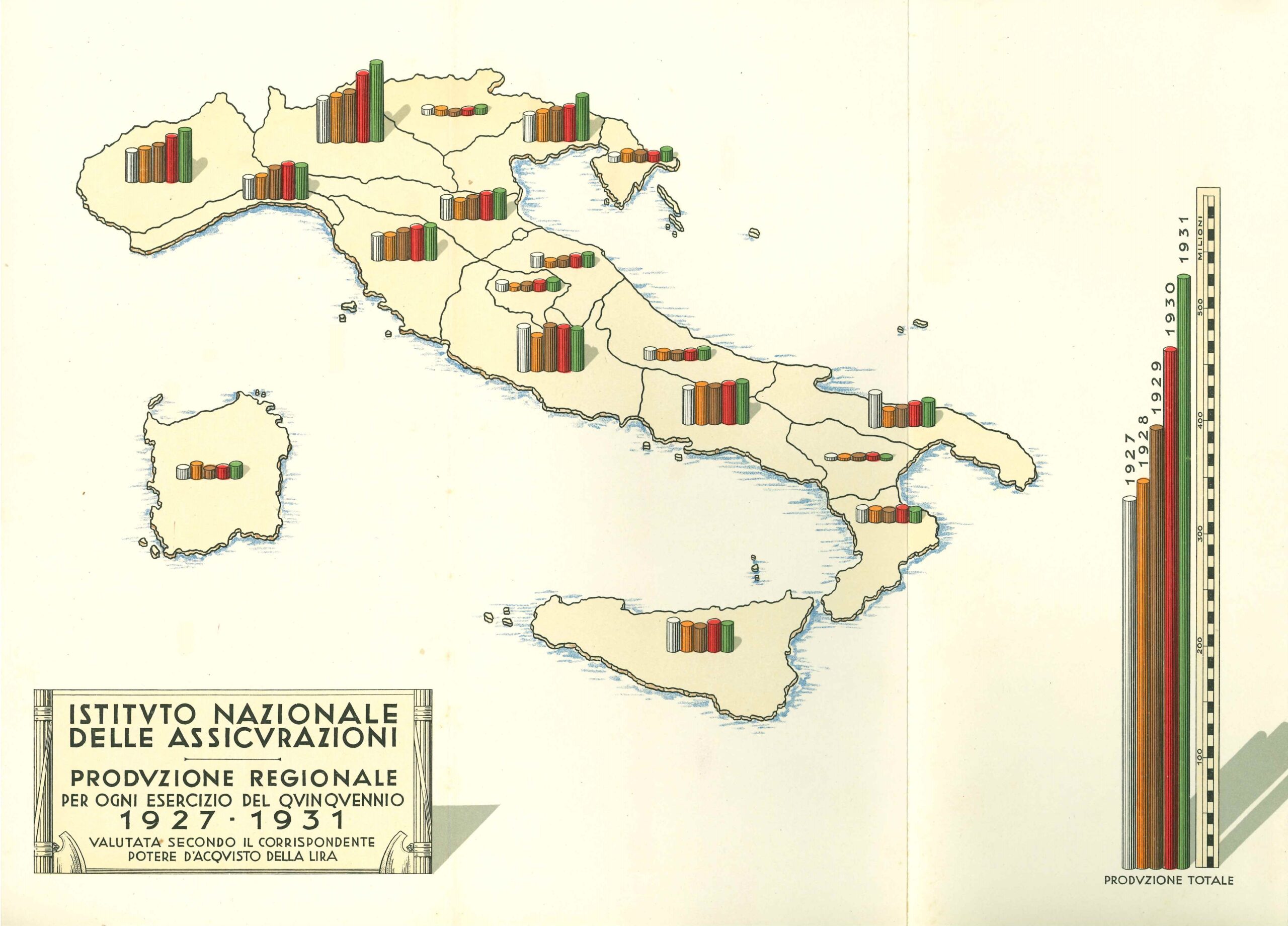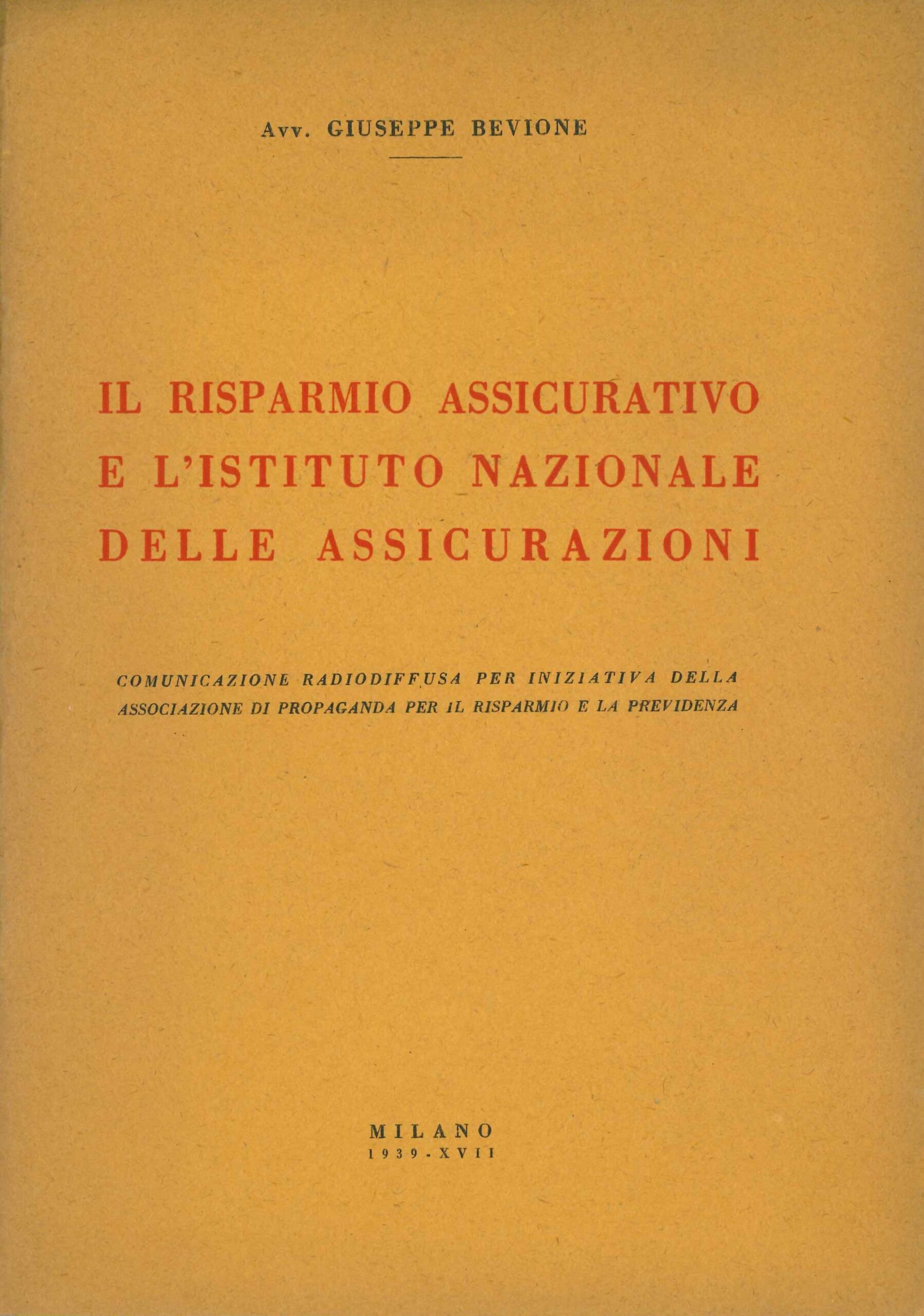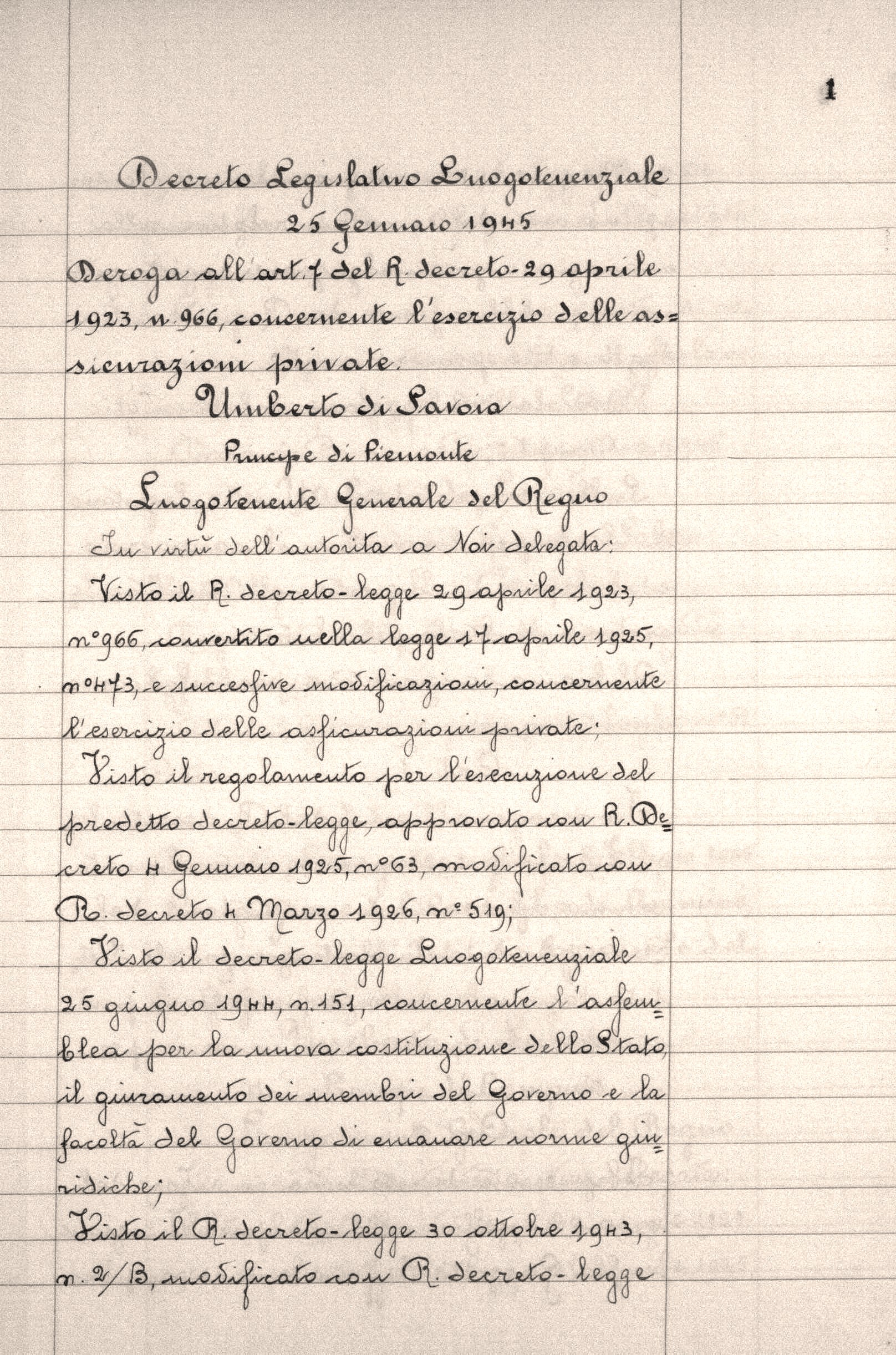The INA Assitalia Historical Archive has uploaded a new database and made important updates to the existing databases on its website section.
The new database contains information about the INA-Casa Plan, also known as the Fanfani Plan (after the minister of labour who introduced it). INA-Casa was a public body established by the Italian government in 1949 under the umbrella of the INA, yet at the same time independent from it, and it served the dual purpose of tackling high unemployment and providing much-needed housing for workers. The INA-Casa Plan was wound up after two seven-year terms (1949-1963) and replaced by the 10-year Gescal (“Gestione Case per Lavoratori”) Plan for Housing Management for Workers, which was itself wrapped up after one term (1963-1973). The INA Assitalia Historical Archive is making the materials present in its archive available to researchers: official documents (budgets, technical manuals, information booklets, newsletters, regulations, forms and posters) and publications of historical interest.
The updates relate to four INA databases that are already accessible through the website: minutes, financial statements, medical-healthcare publications and “small advertising” materials.
In the database of minutes, users can find digital reproductions of the minutes of meetings of the board of directors and the standing committee from 1943 to 1951. These offer an insight into the INA’s perspective (and not only) of the critical stages of the Second World War, through papers brought to public attention in the recent national convention entitled Apparati e centri di potere nella Repubblica Sociale Italiana: politiche e conflitti (apparatuses and centres of power in the Italian Social Republic: politics and conflicts) — and the challenges of the reconstruction that followed.
The reports and budgets are filled with volumes of five-yearly reports on the company’s trends from 1922 to 1961, which the INA was obligated to provide under the terms of a 1923 law. These are full of data, graphics and charts (detailed down to the regional level) that provide an insight into the short- and long-term thinking. The five-year reports complete and integrate the information available in the budgets of the individual business years.
The database of medical-healthcare publications on the one hand saw updates, with the recent find of additional projects of the head of the INA’s medical service, Ilario Romanelli, included in the second series (unpublished booklets and statements). On the other hand, there is a new, fourth series that includes the seven volumes (totalling over 1,300 pages) with the documents of the Comitato Medico Consultivo (CMC), the medical consulting committee founded in 1936 in the wake of an agreement between the INA, the Sindacato Vita della Federazione Nazionale Fascista Imprese Assicuratrici (“Life Insurance Union of the National Fascist Federation of Insurance Companies”) and the Consorzio Italiano per l’Assicurazione Vita dei Rischi Tarati (“Italian Consortium for Life Insurance of Calibrated Risks”), or CIRT. The CMC also included doctors from some of the most important Italian companies in this field, including Assicurazioni Generali and Riunione Adriatica di Sicurtà (RAS). The documents contain a wealth of information on medical studies and about the broader picture of healthcare in Italy through the insurance perspective.
Last but not least, the “small advertising” database has been updated with recently rediscovered booklets.
Discover the databes of the INA-Casa plan and the updates relating to the minutes, the financial statements, the medical-health care publications and the small advertising.

